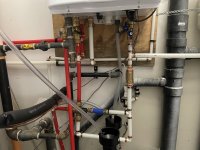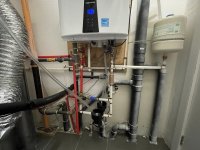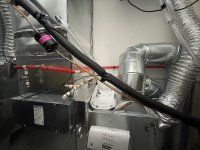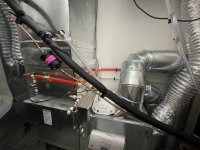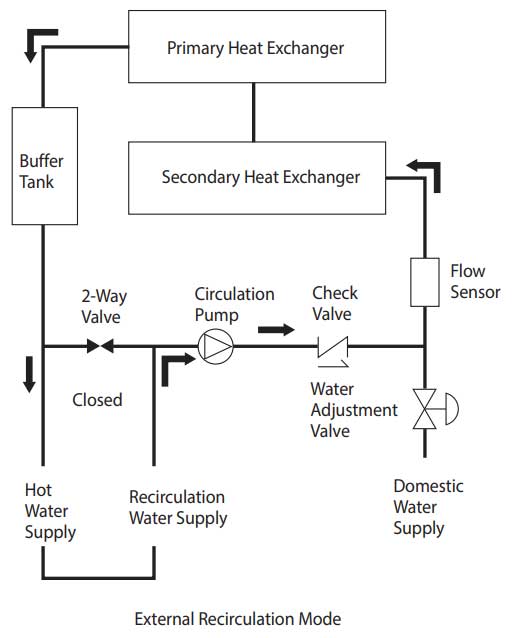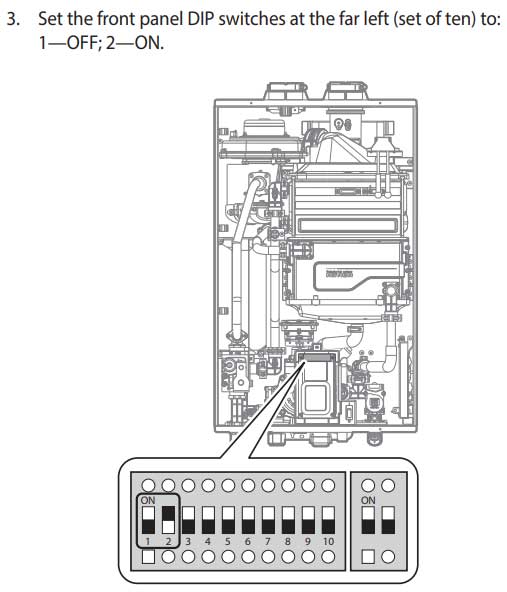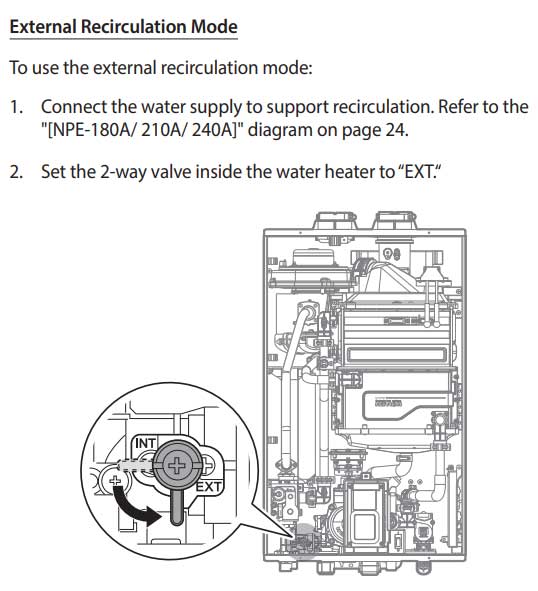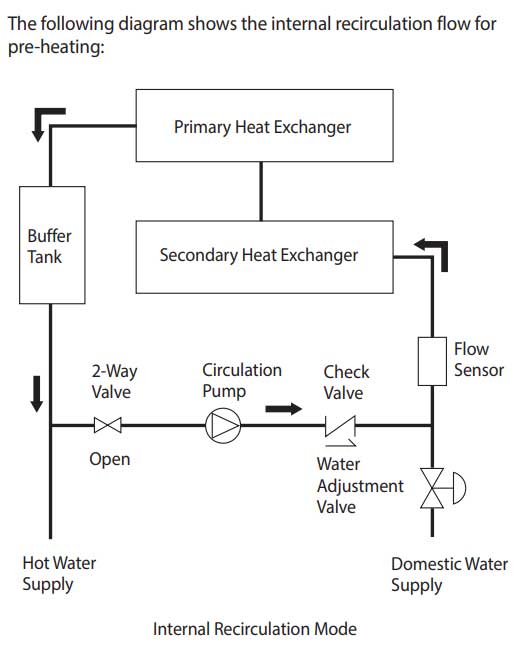We recently moved into a new build 3 floor townhouse that is using the Navien NPE-240A for the water heater and have been experience many issues related to water.
1. Water pressure is very low at the shower faucet (ie. it was measured at about half the PSI it usually should be).
2. Water takes a long time to get to a hot temperature at any faucet.
3. Water doesn't get as hot as we were hoping (I tried bumping the temp up and it's still just "mildly" hot at the faucets).
4. Some faucets like in the kitchen, don't really get hot nor cold.
This post I wanted to narrow in on the 2nd issue where the water is taking a long time to get to a hot temperature. I outlined the other issues in case it would provide any additional clues on what might be going on.
From my quick research, it seems like the recirculation settings may be incorrect but I've been struggling to understand whether this is an external/internal recirculation loop and what to set the int/ext valve to and what to set the dip switches to.
I was hoping some of y'all could take a look at these photos to help guide me in at least setting the right recirculation settings and maybe helping to alleviate this slow hot water issue we've been experiencing.
Thanks!
1. Water pressure is very low at the shower faucet (ie. it was measured at about half the PSI it usually should be).
2. Water takes a long time to get to a hot temperature at any faucet.
3. Water doesn't get as hot as we were hoping (I tried bumping the temp up and it's still just "mildly" hot at the faucets).
4. Some faucets like in the kitchen, don't really get hot nor cold.
This post I wanted to narrow in on the 2nd issue where the water is taking a long time to get to a hot temperature. I outlined the other issues in case it would provide any additional clues on what might be going on.
From my quick research, it seems like the recirculation settings may be incorrect but I've been struggling to understand whether this is an external/internal recirculation loop and what to set the int/ext valve to and what to set the dip switches to.
I was hoping some of y'all could take a look at these photos to help guide me in at least setting the right recirculation settings and maybe helping to alleviate this slow hot water issue we've been experiencing.
Thanks!

